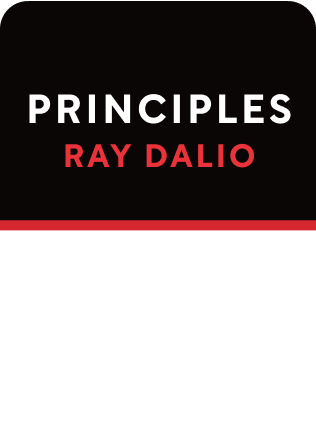

This article is an excerpt from the Shortform summary of "Principles: Life and Work" by Ray Dalio. Shortform has the world's best summaries of books you should be reading.
Like this article? Sign up for a free trial here .
What does solving problems at work mean? How can you effectively solve problems using the Principles tools?
Solving problems at work is an important part of working as a team. When you work together, you can find and solve problems more effectively.
Read more to find out about solving problems at work, and why you need to work on acquiring problem-solving skills.
Solving Problems at Work: How to Find Solutions
Before you jump to solving problems at work, look backwards in time. Replay the story of what you have done to get you in your current position.
Then look down on yourself objectively, like a machine, and find changes to produce better outcomes and discover how to find solutions.
- Say you have a problem with distraction and you check your phone every 10 seconds. Now think of a machine that has the same problem. Would you tolerate a microwave that shuts off every 10 seconds to check its phone? If not, why would you tolerate this in yourself?
Next, visualize what you need to do to get around the problems. Literally visualize it—think of what must happen at what times to reach your goals.
- Think of your plan as a movie script, with people playing roles at specific times.
To build out your plan, drill down from high level to specific tasks and timelines. Start from high level and drill down into low-level details.
Write down your plan for everyone to see and measure your progress against.
Do the Tasks Required to Completion
Once you have your plan, you need to execute it. You need the discipline to act out your script. This is part of solving problems at work.
Have good work habits. Prioritize your to-do lists, and tick them off in order.
Measure your progress by setting clear, well-defined metrics. If you aren’t meeting your metrics, that’s a problem that needs to be diagnosed and solved.
To keep up your motivation, remember the goals you want to achieve, and how your plans will help you achieve those goals. If you lose sight of this “why?” you will lose sight of your goals, and you will lose motivation in your plan.
Those are all five steps. It sounds simple. But simple doesn’t mean easy.
Executing the 5-Step Plan
Here are more suggestions on how to execute the 5-step plan for solving problems at work.
Follow the five steps in order. If you go out of order, you won’t execute each step to its fullest potential, and it won’t help you learn how to find solutions.
- As you set your goals, don’t worry about how you’re going to achieve them. Don’t dampen your ambition based on what you know you’re capable of achieving today.
- As you diagnose your problems, don’t worry about how you’re going to solve them yet. Don’t shy away from recognizing big problems just because you don’t know what to do about them.
No one is great at all 5 steps. Some creative people can’t execute; some people find it hard to diagnose their own weaknesses. Solving problems at work requires recognizes these skills.
- Find which steps you fail at.
- Then get rid of that weakness. You can either get better at it yourself, or find other people who can help compensate for your weakness.
As you go through the steps, visualize your success to stay motivated. Even while you struggle to achieve success, you can crave the thrill of success. You can also visualize the tragic results if you fail to push through.

———End of Preview———
Like what you just read? Read the rest of the world's best summary of Ray Dalio's "Principles: Life and Work" at Shortform .
Here's what you'll find in our full Principles: Life and Work summary :
- How Ray Dalio lost it all on bad bets, then rebounded to build the world's largest hedge fund
- The 5-step process to getting anything you want out of life
- Why getting the best results means being relentlessly honest with everyone you work with






